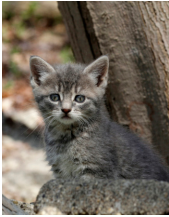WHITEWATER REGION (Cobden) — You’ve seen them around and possibly heard them out and about at night. If you’re a resident of Whitewater Region, you’re no stranger to cats.
What you may not be aware of is the difference between a stay and a feral cat. This is what brought the OSPCA to the Council meeting for the Township of Whitewater Region yesterday.
According to the presentation made by April Ashcroft, a feral cat is a cat who has either never had any contact with humans or their contact with humans has diminished over time. They are typically fearful of people and survive on their own outdoors. She stated a feral cat is not likely to ever become a lap cat or enjoy living indoors.
Due to the cat population being something of notice in the region, recognizing the differences between the two is important. Ashcroft says one difference is kittens born to feral cats can be socialized at an early age and adopted into homes.
The presentation stated stray cats can readjust to living with people and can be adopted as companions, whereas adult feral cats are not socialized to people. This means they generally cannot be adopted. As a result, the cats are likely to be killed if picked up by animal control or brought to shelters. This is why it is in their best interest to continue living outdoors.
Stray and and feral cats can be difficult to tell apart, especially when they are trapped or frightened. Scared
stray cats often need time to relax and show their level of socialization.
Ashcroft emphasized the Trap-Neuter-Return program, which is the humane and effective approach for stray and feral cats. Now in practice for decades in the United States after being proven in Europe, scientific studies show the program improves the lives of feral cats, improves their relationships with the people who live near them and
decreases the size of colonies over time.
“The program is successfully practiced in hundreds of communities,” said Ashcroft. The cats are humanely trapped and taken to a veterinarian to be neutered and vaccinated. After recovery, the cats are returned to their colony outdoors.
Kittens and cats who are friendly and socialized to people may be adopted into homes, however trying to manage the population through adoption is not possible. The resources are not available to socialize and adopt the tens of millions of feral cats in Canada.
The feral cat movement has a few goals. They want to change the way feral cats are routinely treated in Canada and they want to recognize a cats right to live. They also want to improve the quality of the cats lives through spay and neutering.
The nonprofit organization Whiskers of Whitewater was in attendance and is committed to assisting in the management of feline strays. The organization is committed to providing humane care to homeless animals.







![Kenopic/Smith Auction [Paid Ad]](https://whitewaternews.ca/wp-content/uploads/2018/10/advertising-100x75.jpeg)

